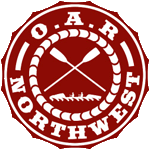 The raised landmass of Destruction Island is shaped somewhat like a comma when viewed from above. Sholes extends in either direction for a great distance. It looks like a huge clawed hand was scraping this part of the Pacific coastline and missed this part. From a distance it looks like a green tabletop eighty feet above waves with a lighthouse somewhat reminiscent of chess piece sitting on top. The island is roughly 16 miles south from La Push and about three from shore. It took us about 5 hours. Curious to see what it looked like up close we cruised around the shoals to the leeward side of the island. Two fishing boats were anchoring here for the night taking advantage of the calm water, something that I think is done this time of year. We overheard them chatting on the VHF about their days catch and the never-ending to do list common on boats. The sun was obscured from behind the island giving a golden luster to the tidal pools and the driftwood on the beach including a very random canoe. Not a sea going canoe, a river canoe. Strange considering this island no longer has a lighthouse keeper and is a national wildlife refuge. Dozens of seals looked at us curiously from shore with dark glossy eyes. Around the island, before the rock turns into shoals are tidal pools and mini narrow coves only exposed at low tide that these seals swim in and out, fearless of the sharp mussel covered rocks. Above us the landscape raises up nearly 80 vertical feet. There are over 14 eagles that we spot as well as numerous other birds. In-between the brush and no doubt on constant watch for the eagles are black rabbits brought here by a lighthouse keepers daughter. After a little research I would find that some of these rabbits are 15 to 20lbs. No wonder we could see them from shore.
The raised landmass of Destruction Island is shaped somewhat like a comma when viewed from above. Sholes extends in either direction for a great distance. It looks like a huge clawed hand was scraping this part of the Pacific coastline and missed this part. From a distance it looks like a green tabletop eighty feet above waves with a lighthouse somewhat reminiscent of chess piece sitting on top. The island is roughly 16 miles south from La Push and about three from shore. It took us about 5 hours. Curious to see what it looked like up close we cruised around the shoals to the leeward side of the island. Two fishing boats were anchoring here for the night taking advantage of the calm water, something that I think is done this time of year. We overheard them chatting on the VHF about their days catch and the never-ending to do list common on boats. The sun was obscured from behind the island giving a golden luster to the tidal pools and the driftwood on the beach including a very random canoe. Not a sea going canoe, a river canoe. Strange considering this island no longer has a lighthouse keeper and is a national wildlife refuge. Dozens of seals looked at us curiously from shore with dark glossy eyes. Around the island, before the rock turns into shoals are tidal pools and mini narrow coves only exposed at low tide that these seals swim in and out, fearless of the sharp mussel covered rocks. Above us the landscape raises up nearly 80 vertical feet. There are over 14 eagles that we spot as well as numerous other birds. In-between the brush and no doubt on constant watch for the eagles are black rabbits brought here by a lighthouse keepers daughter. After a little research I would find that some of these rabbits are 15 to 20lbs. No wonder we could see them from shore.
Its first European name was Isla de Dolores or Island of Sorrows after a Spanish boat moored here on the leeward side and sent seven men ashore for wood and water to the mainland that were quickly killed by the local tribes. The same fate would befall an English ship named the Imperial Eagle 12 years later. That captain named the river where the attack occurred Destruction River, a name that became attributed to the island when the rivers name reverted back to Hoh River.
The lighthouse was built in 1891 and was manned by four families who grew vegetables and cattle on the tiny island but has been unmanned since 1968. It felt strange to round the south side and see the tiny cove that served as the docking point to unload the materials to build the 94 ft lighthouse. We could still see the concrete pilings and the short steep and now very rickety looking railway trusses that took supplies from boats to the top of the island. How long the lighthouse will lasts is hard to say, its walls are 4 feet thick at the bottom and eighteen inches on top, all wrapped in riveted iron. We ate dinner in the shelter of the island and Rick and I rowed away into three foot and growing beam seas that evening and I was shocked to see the light was dim. Later I would find out that its been shut off since 2008, a budget cut luxury only practical in the age of GPS.
